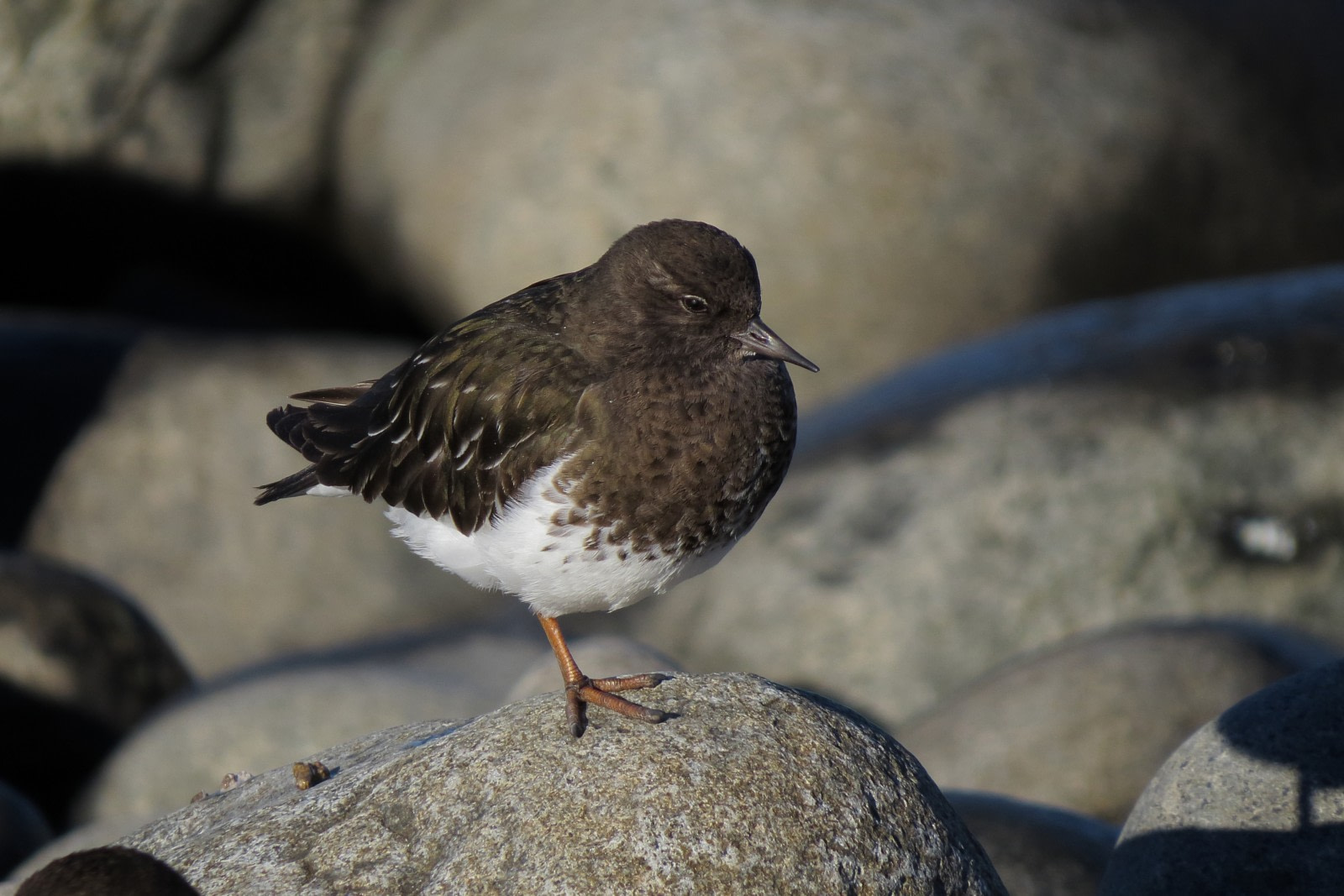Name: Ruddy Turnstone (Arenaria)
Length: 20 to 25 cm.
Weight: 85 – 170g.
Location: Coastal regions – the Arctic in the summers, migrating to various locations around the world during winter as far south as South Africa and Australia.
Conservation status: Least Concern.
Diet: Invertebrates, crustaceans, barnacles, a wide range of scavenged foods.
Appearance: Darker camouflage colours during the winter, brighter plumage during the breeding season.
How do Ruddy Turnstones feed?
Ruddy Turnstones are waders, wading in shallow waters. They gained the name Turnstone from their habit of turning over stones and seaweed in their search for invertebrates.
Are Ruddy Turnstones social?
Ruddy Turnstones do tend to be social, forming colonies ranging from tens of individuals to thousands, and they will mix with other kinds of sea birds. However, they become aggressive in chasing off the other breeds when food is at stake.
How fast do Ruddy Turnstones fly?
Ruddy Turnstones can fly up to 65 km per hour.
What are Ruddy Turnstone birthing rituals like?
Female Ruddy Turnstones are sexually mature around 2 years of age; the males reach maturity at 4 years.
Ruddy Turnstones display distinctly different plumage depending on the season.
During the winter months, their feathers are darker browns and greys. However, during the breeding season, their plumage takes on brighter colours – a black and white head, light brown back, white belly, with exposed red legs.
Males arrive first at the breeding grounds somewhere in the month of May, getting to work scraping out the shallow nest. They and their previous mates (if applicable) will often return to the same breeding grounds as the previous years.
Ruddy Turnstones are monogamous and once paired off will generally return to the same mate for following breeding seasons.
While at their breeding grounds, Ruddy Turnstones become extremely aggressive, flying up to 160 km to chase away invasive gulls.
The nests are slight, usually just scrapes or small depressions in the ground near areas with low vegetation. On average, 4 light olive-coloured eggs are laid. The parents will take turns incubating the eggs for the following 3 to 4 weeks.
The hatchlings are able to leave the nest soon after hatching and are able to feed themselves. They are able to fly after about a month.
How long do Ruddy Turnstones live?
Ruddy Turnstones live an average of 6 or 7 years in the wild. The highest recorded lifespan was a bit over 19 years of age, recorded in Finland.
How many Ruddy Turnstones are there today?
Rough estimates are:
- Ruddy Turnstones – 450,000
- Black Turnstones – 95,000
Do Ruddy Turnstones have any natural predators?
Ruddy Turnstone eggs and young are prey for gulls, jaegers, ravens, and foxes. Parents have been recorded pretending to have a broken wing in order to lure predators away from their nests. Adult Ruddy Turnstones are sometimes preyed upon by owls, merlins, falcons, and sparrow-hawks.
7 Terrific Ruddy Turnstone Facts
- There are actually two kinds of Turnstone – the Ruddy Turnstone (circumpolar, wintering as far south as South Africa and Australia) and the Black Turnstone (the west coast of North America, summering in Alaska).
- You can tell a Ruddy Turnstone is ready to get aggressive by its posture – a lowered tail and hunched posture indicate that there may be trouble.
- Ruddy Turnstones will fly over 500,000 km in their lifetimes.
- Ruddy Turnstones were first recorded by Swedish physician, zoologist, and botanist Carolus Linnaeus in 1758.
- Ruddy Turnstones travel more than 1000 km a day during their migrations. These migration paths can lead a Ruddy Turnstone along a trip that extends more than 27,000 km in a year.
- Ruddy Turnstones are related to sandpipers.
- Since Ruddy Turnstones breed so far north there has not yet been a lot of study done on their breeding habits.



